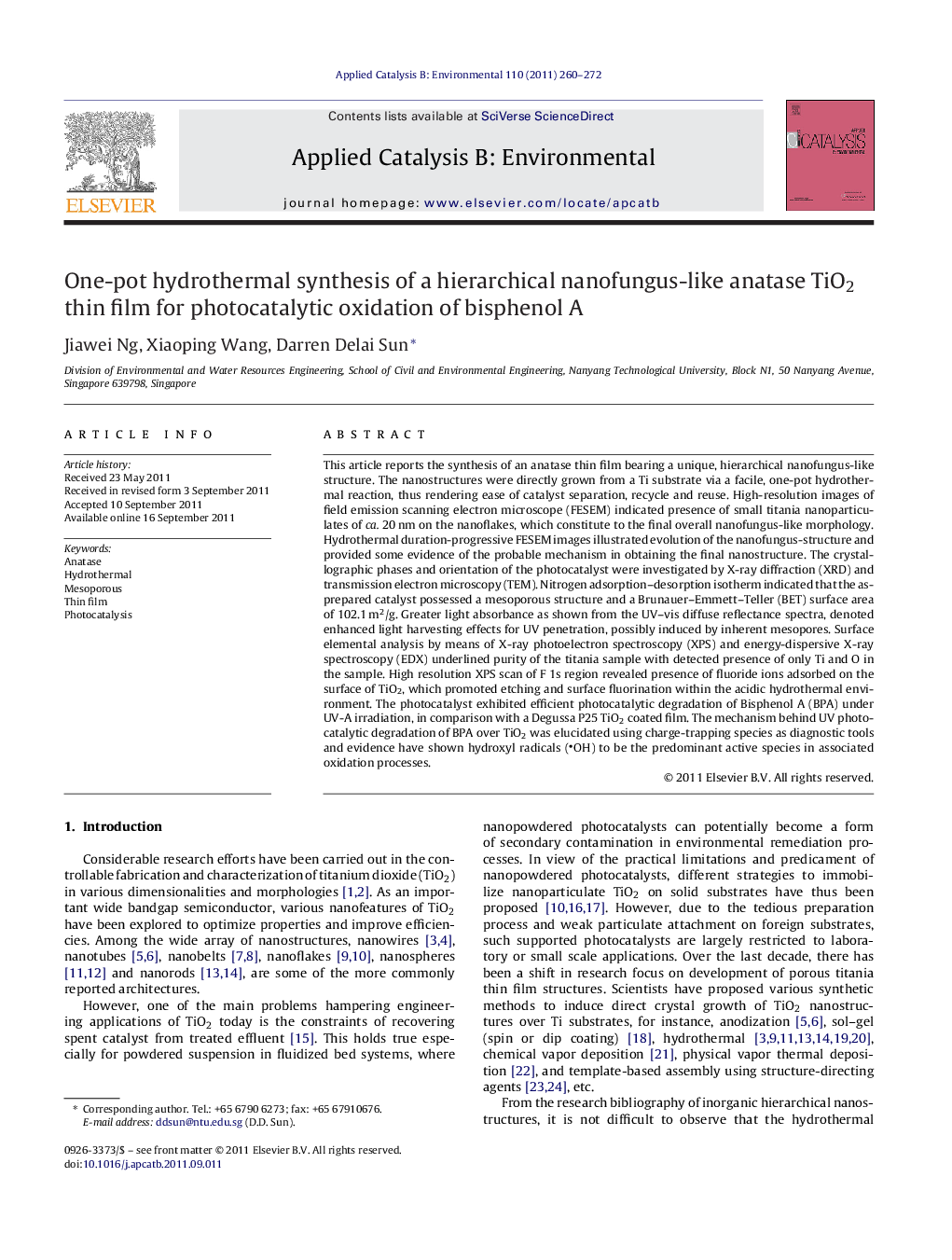| کد مقاله | کد نشریه | سال انتشار | مقاله انگلیسی | نسخه تمام متن |
|---|---|---|---|---|
| 46597 | 46442 | 2011 | 13 صفحه PDF | دانلود رایگان |

This article reports the synthesis of an anatase thin film bearing a unique, hierarchical nanofungus-like structure. The nanostructures were directly grown from a Ti substrate via a facile, one-pot hydrothermal reaction, thus rendering ease of catalyst separation, recycle and reuse. High-resolution images of field emission scanning electron microscope (FESEM) indicated presence of small titania nanoparticulates of ca. 20 nm on the nanoflakes, which constitute to the final overall nanofungus-like morphology. Hydrothermal duration-progressive FESEM images illustrated evolution of the nanofungus-structure and provided some evidence of the probable mechanism in obtaining the final nanostructure. The crystallographic phases and orientation of the photocatalyst were investigated by X-ray diffraction (XRD) and transmission electron microscopy (TEM). Nitrogen adsorption–desorption isotherm indicated that the as-prepared catalyst possessed a mesoporous structure and a Brunauer–Emmett–Teller (BET) surface area of 102.1 m2/g. Greater light absorbance as shown from the UV–vis diffuse reflectance spectra, denoted enhanced light harvesting effects for UV penetration, possibly induced by inherent mesopores. Surface elemental analysis by means of X-ray photoelectron spectroscopy (XPS) and energy-dispersive X-ray spectroscopy (EDX) underlined purity of the titania sample with detected presence of only Ti and O in the sample. High resolution XPS scan of F 1s region revealed presence of fluoride ions adsorbed on the surface of TiO2, which promoted etching and surface fluorination within the acidic hydrothermal environment. The photocatalyst exhibited efficient photocatalytic degradation of Bisphenol A (BPA) under UV-A irradiation, in comparison with a Degussa P25 TiO2 coated film. The mechanism behind UV photocatalytic degradation of BPA over TiO2 was elucidated using charge-trapping species as diagnostic tools and evidence have shown hydroxyl radicals (OH) to be the predominant active species in associated oxidation processes.
. A mesoporous, hierarchical nanofungus-like anatase thin film was synthesized via a facile one-pot hydrothermal synthesis and exhibited excellent photocatalytic efficiency, in comparison with a Degussa P25 coated film.Figure optionsDownload as PowerPoint slideHighlights
► Unique anatase TiO2 thin film with hierarchical nanofungus-like structure.
► Mesoporous, surface-fluorinated photocatalyst of high BET surface area (102.1 m2/g).
► Enhanced photocatalytic degradation of BPA over P25 nanoparticulate film.
► Facile one-pot hydrothermal synthesis accentuates potential in engineering applications.
Journal: Applied Catalysis B: Environmental - Volume 110, 2 November 2011, Pages 260–272